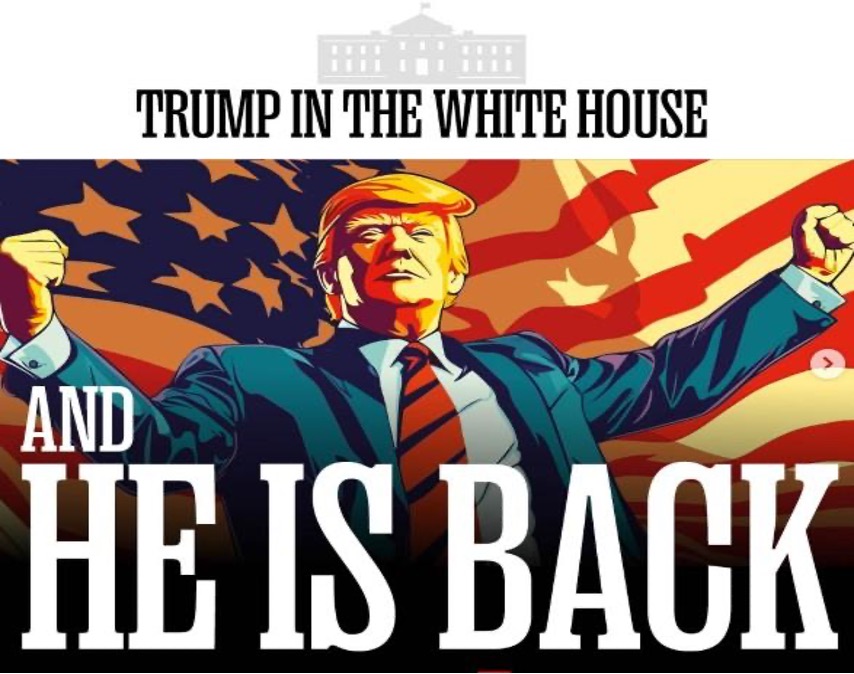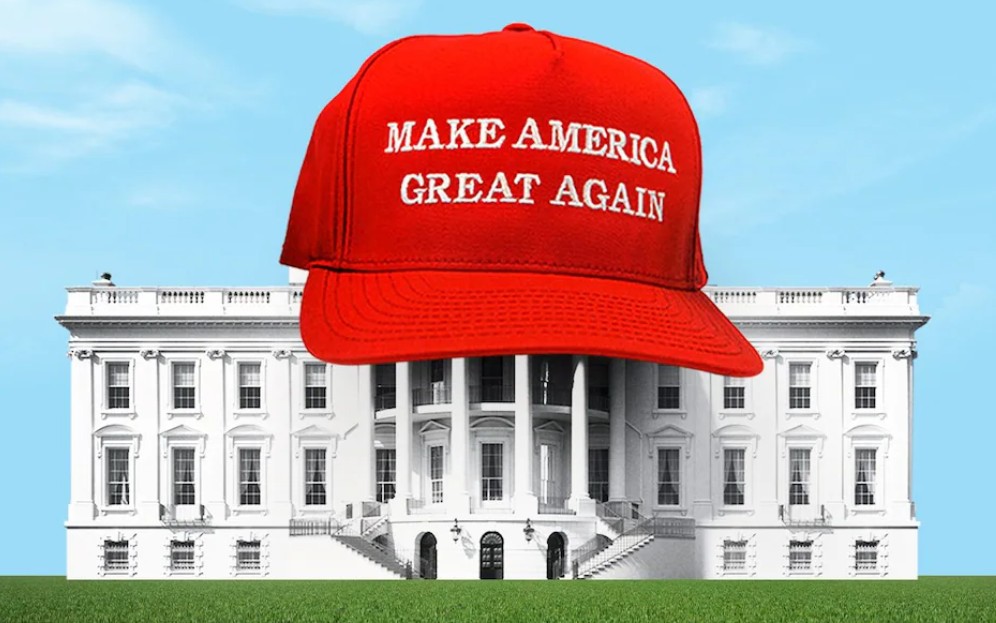With Donald Trump’s return to the White House for a second term, investors and analysts alike are bracing for a new wave of economic policies and geopolitical shifts that will significantly impact the markets. Trump’s leadership, known for its bold and often unpredictable moves, is set to reshape global financial landscapes in 2025. From trade wars to tax cuts and deregulation, Trump’s second presidency promises to be a game-changer. Let’s take a closer look at the macroeconomic forces that are expected to shape the market in 2025 and beyond.

1. Economic Nationalism: A Focus on “America First”
Under Trump’s leadership, the focus on “America First” has returned full force. This means more emphasis on domestic manufacturing, self-sufficiency, and reducing reliance on foreign imports. Investors can expect to see a resurgence in protectionist policies, including tariffs on goods from countries like China, which will have both short-term and long-term effects on global markets.
For investors, this presents both risks and opportunities. While U.S. companies benefiting from government incentives to move manufacturing back to American soil may see a boost, sectors reliant on international supply chains—such as technology and consumer goods—could face cost pressures. In emerging markets, particularly China, the return of trade tariffs could result in volatility and price fluctuations.
2. Tax Cuts and Deregulation: A Market-Friendly Approach
Trump’s first term saw the passage of significant tax cuts, particularly for large corporations, designed to spur growth and investment. With a second term now in play, further tax cuts—especially for corporations and wealthy individuals—seem likely. This will likely fuel economic expansion in the short term, providing a boost to stock markets.
Additionally, Trump’s commitment to deregulation could unlock potential for several industries, especially in energy, healthcare, and finance. The rollback of environmental regulations, for example, could drive growth in the oil and gas sectors, while fewer regulations in banking might encourage lending and investment in financial services. These moves could make Trump’s second term favorable for stocks in certain sectors.
3. Monetary Policy and Interest Rates: Trump’s Influence on the Fed
Trump’s impact on the Federal Reserve will also be a key factor in shaping the market. Known for publicly criticizing the Fed’s interest rate hikes during his first term, Trump is likely to continue pressuring the central bank to maintain low interest rates, which would help stimulate economic activity. However, with inflation remaining a concern globally, this creates a delicate balancing act.
For investors, low interest rates would continue to favor borrowing, spurring corporate investment and consumer spending. However, there are risks associated with such policies, including the possibility of asset bubbles in real estate and stocks, especially if inflation continues to outpace economic growth.
4. Geopolitical Risks and Global Tensions
Trump’s foreign policy has always been assertive and at times controversial. His return could heighten geopolitical risks, particularly in regions like Eastern Europe, the Middle East, and Asia. The U.S.’s relationship with China, in particular, will be crucial—expect to see renewed tensions, possibly even trade wars, as Trump pushes to reduce the U.S. trade deficit and rein in Chinese economic power.
Market instability is a real possibility, especially in sectors tied to global supply chains or commodities like oil, which could see price fluctuations based on geopolitical tensions. For investors, this means staying alert to potential disruptions and evaluating the impact of foreign policy decisions on asset prices.
5. Technological Advancements and Shifting Economic Trends
While Trump’s policies focus heavily on domestic issues, the technological landscape continues to evolve at a rapid pace. With advancements in artificial intelligence, automation, and renewable energy, we are likely to see continued disruptions across many industries.
Trump’s stance on climate change and clean energy could influence the pace of the green energy transition. While his administration may be less supportive of environmental regulations, the global momentum toward renewable energy and carbon reduction initiatives will continue regardless of U.S. policy. Therefore, investors should look for opportunities in the tech and renewable energy sectors, which remain poised for growth in 2025.
6. Inflation and the Federal Reserve’s Role

Inflation remains a significant concern as we head into 2025, and Trump’s economic policies could have both positive and negative effects on this front. On the one hand, low interest rates, deregulation, and tax cuts could keep inflation in check by stimulating economic growth. On the other hand, increased government spending, particularly on infrastructure and defense, could add inflationary pressures to the economy.
The Federal Reserve will continue to play a central role in managing inflation, but with Trump’s influence, there could be additional pressure on the central bank to keep interest rates low for longer, which may risk fueling inflation even further. For investors, this means that rising inflation could reduce the purchasing power of currencies and impact long-term investments in fixed-income assets.
7. The Energy and Commodities Outlook
Trump’s policies are likely to be more favorable to the energy sector, particularly oil and gas. The relaxation of environmental restrictions and a focus on energy independence could lead to increased production in the U.S. This could stabilize global energy markets, particularly in the face of geopolitical tensions in the Middle East and Eastern Europe.
For commodities, expect to see continued price volatility as Trump’s foreign policy and energy strategies affect global supply chains. Oil prices, in particular, could rise or fall sharply based on global demand and Trump’s stance on OPEC, Russia, and other energy-producing nations.
Conclusion: Navigating the New Era of Trump’s Second Ter
With Donald Trump back in the Oval Office, the global markets are in for a tumultuous yet potentially profitable ride. Investors will need to carefully navigate the evolving landscape of protectionism, deregulation, and geopolitical risks, all while taking advantage of opportunities in sectors like technology, energy, and financial services.
Staying informed on Trump’s policy moves—particularly in relation to trade, tax cuts, and foreign relations—will be crucial for investors looking to make informed decisions in 2025. In this new era of American leadership, those who understand the macroeconomic forces at play and the direction in which Trump is steering the economy will be well-positioned to profit in the years to come.


